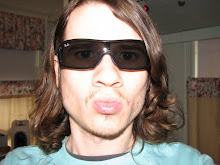In 1985, Colman McCarthy and his wife, May, established the Center for Teaching Peace, a Washington- based nonprofit that helps schools begin or expand academic programs in conflict resolution and peace studies. Today, he teaches classes at three universities and three high schools.
Peace, Jim
JW (John Wilson of Hope Magazine) : How do we create a culture of peace- or is that an impossible dream?
CM: Schools need to be one of the major solutions. We have 78,000 elementary schools in this country, 31,000 high schools, and 3,100 colleges and universities. All of those need to be teaching the basics of conflict resolution and the methods, history, and practitioners of genuine peacemaking, and the belief that we get strength through peace and not peace through strength.
Right now, we have children in our first, second, and third grades who, in fifteen or twenty years, will be convicted and sent to prison for violent crimes. We also have children in those grades who will one day be in Congress, the White House, the Supreme Court, and the corporate boardrooms.
Unless we teach our children peace, someone else will teach them violence. Every conflict, whether in our personal lives or among nations, is faced through violent force or nonviolent force. No third option exists. It’s either prevention before the conflict with nonviolence, or intervention after with violence.
Both violence and nonviolence have failed, but the worst failure-the bloodiest, the cruelest, the stupidest-has been violence. If violence were effective, we would have had a peaceful world long ago.
We have extraordinary faith in violence, and at the same time, extraordinary skepticism of nonviolence. You can send a group of pacifists to a scene of conflict, and a certain number are killed or wounded. What’s society’s judgment? “The damned idiots!” Send in an army loaded with weapons and a certain number are killed or wounded. What’s the judgment? “That’s war, no problem.” The double standard persists.
CM: Schools need to be one of the major solutions. We have 78,000 elementary schools in this country, 31,000 high schools, and 3,100 colleges and universities. All of those need to be teaching the basics of conflict resolution and the methods, history, and practitioners of genuine peacemaking, and the belief that we get strength through peace and not peace through strength.
Right now, we have children in our first, second, and third grades who, in fifteen or twenty years, will be convicted and sent to prison for violent crimes. We also have children in those grades who will one day be in Congress, the White House, the Supreme Court, and the corporate boardrooms.
Unless we teach our children peace, someone else will teach them violence. Every conflict, whether in our personal lives or among nations, is faced through violent force or nonviolent force. No third option exists. It’s either prevention before the conflict with nonviolence, or intervention after with violence.
Both violence and nonviolence have failed, but the worst failure-the bloodiest, the cruelest, the stupidest-has been violence. If violence were effective, we would have had a peaceful world long ago.
We have extraordinary faith in violence, and at the same time, extraordinary skepticism of nonviolence. You can send a group of pacifists to a scene of conflict, and a certain number are killed or wounded. What’s society’s judgment? “The damned idiots!” Send in an army loaded with weapons and a certain number are killed or wounded. What’s the judgment? “That’s war, no problem.” The double standard persists.
Peace, Jim

Comments
Post a Comment